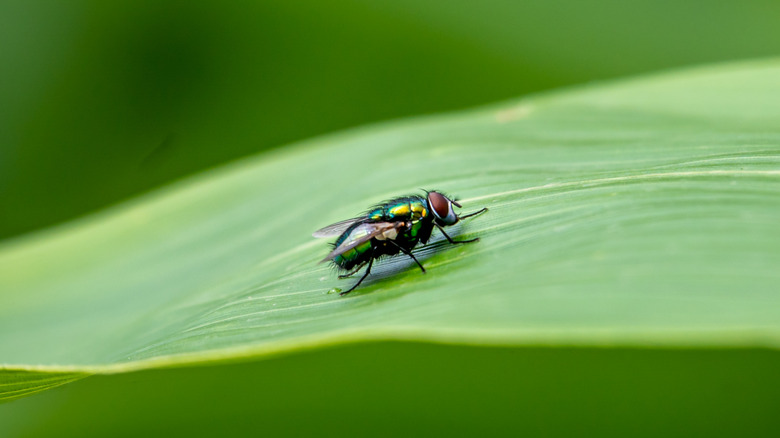The Weird Truth About The Ancient Unicorn Fly
The amazing properties of amber might be the closest scientists can get to time travel. As reported by Earth Archives, amber is petrified tree resin used today to make jewelry. However, as the substance originates as tree resin in viscous form, plants, insects, and other small organisms often get stuck and die in the sticky sap, which eventually hardens and traps specimens inside. This creates fossils that paleontologists can now examine to gain insight into extinct life forms, evolution, and the history of disease, among other things.
Dr. George Poinar Jr. of Oregon State University is one of the most prominent amber researchers in the world. He and some colleagues discovered a flea trapped in 20 million-year-old Dominican amber that ended up containing the plague bacterium. This led to the discovery that the cause of the plague that wiped out a good part of Europe during the Middle Ages likely surfaced much earlier than scientists had originally estimated.
Another amazing discovery of Poinar's was that of the family, genus, and species Cascoplecia insolitis in 2010. In a paper for the journal Cretaceous Research, available via Science Direct, Poinar wrote that Cascoplecia insolitis (later nicknamed the unicorn fly due to the small horn topped by three eyes that rose from its head) was found in Burmese amber from the Early Cretaceous period about 100 million years ago.
The unicorn fly was too specialized to live
In a press release from the University of Oregon, available at Science Daily, Dr. George Poinar Jr. explained, "No other insect ever discovered has a horn like that, and there's no animal at all with a horn that has eyes on top." This is presumably what led Poinar to give the unicorn fly the official name Cascoplecia insolitis — "cascus" is Latin for "old" and "insolates" for "strange and unusual." In addition to its three-eyed horn, the fly also had an unusual antenna, particularly small mandibles that would have limited its food sources to very small particles, and long legs that assisted in crawling over flowers. Small grains of pollen were also found on the insect's legs, confirming its food source.
Per Poinar, the unicorn fly's odd attributes were likely what led to its extinction: "Its specialized horn and eyes must have given this insect an advantage on very tiny flowers, but didn't serve as well when larger flowers evolved. So it went extinct." The well-preserved specimen contained the wings as well as the nearly complete body of the fly, with only some of the abdomen and left hind leg missing.
Scientists excavated the amber in 2001 from the Hukawng Valley of Myanmar, and it dates from what Poinar called the end of the Early Cretaceous period "when lots of strange evolutionary adaptations were going on." Indeed, the unicorn fly's adaptation was seemingly too specialized to lead to long-term success for the species. According to Poinar, "This 'unicorn' fly was one of the oddities of the Cretaceous world and was obviously an evolutionary dead end."

